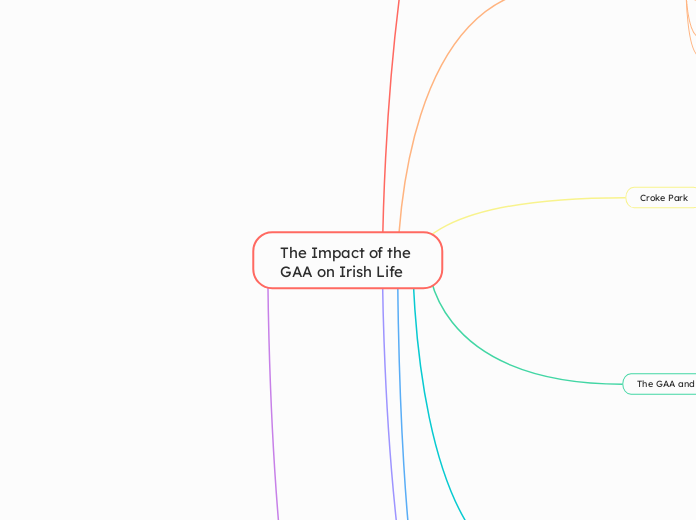The Impact of the GAA on Irish Life
Foundation of The GAA
The GAA was founded in the Hayes Hotel, Thurles on 1st November 1884 by Michael Cusack and Maurice Davitt
Michael Cusack had a big interest in sport and wanted it open to lower class people like labourers and policemen. He wanted a standard set of rules for hurling
Patrons- Archbishop Croke, C.S Parnell and Michael Davitt.
Cultural Revival-promote all things Irish and gaelic and reduce English influence.
The Gaelic League was founded to promote use of the Irish language
Many members of the GAA were members of the Gaelic league
The GAA wanted to promote the traditional Irish sports (football, hurling, handball and rounders) and actively support irish dancing, music, song etc.
The GAA wanted to promote these sports all around the world and have international units.
The GAA would also only use Irish materials
Clubs were founded in many counties and parish based club led to an increase in local pride.
Trouble for The GAA
Cusack was fired as secretary because of the American Invasion, a disastrous tour of America.
The 1888 American Invasion Tour- There was a revival of The Talteann Games and to fund this 50 players went to America to display hurling and football etc.There was terrible weather and infighting which resulted in low attendances. The GAA had to get £480 to get them home but 17 stayed in America. This did arouse interest in Irish games in America.
Conflict in the GAA between the fenians and Home Rulers which split the GAA. There was a decline in the 1890s.
A revival occurred in the early 20th Century
Croke Park
Playing fields in Jones' Road, Dublin were bought by the GAA in 1913 which became Croke Park and the HQ of the GAA.
Huge contribution to Dublin's economy
1920's- Hogan Stand
1930's-Cusack Stand
The GAA and The 1916 Rising
The GAA was part of a separatist traditon.
Lots of GAA members became involved in political activity.
The IRB viewed the GAA as a cover for training people for a rising.
The RIC would inform on GAA member's activities and in return RIC were banned from GAA matches.
Rule 21 banned members of the British army and RIC from being members of the GAA. This rule was lifted in 2001.
Known as 'The Ban'. Rule 27 was lifted in 1971. This rule banned members from playing or attending foreign sports matches like soccer, rugby, cricket and hockey matches.
Douglas Hyde, protestant president of Ireland attended a rugby match and was thrown out of the GAA as a result of 1938.
Rule 42 banned the playing of foreign sports in GAA stadiums. This was lifted in 2007 when Ireland and England played a rugby match during the building of the Aviva Stadium.
This was a symbolic match that showed a greater understanding between the two countries.
Gaelic Sunday (1918)
The british authorities banned hurling or football unless you had a permit from dublin castle.
Games were played throughout the country to defy this
1924- The Tailteann Games, their most successful edition. £10,000 government grant was used to build The Hogan Stand
Ladies Football and Camogie
Camogie Association founded in 1904.
Ladies Football founded in 1974.
Separate Associations but receive significant support.
The Impact of GAA Clubs
Club and county structure.
Club based on parish.
Competition and local pride.
Blur class distinctions.
Strong relationship between the GAA and the Catholic Churches.
Voluntary and amateur commitment
Promoted democratic tradition.
The GAA and 'The Troubles'
The GAA-an expression of identity for nationalist in North.
Loyalists looked on GAA as a nursery school for republicans and nationalists.
Some GAA members were murdered or harassed and GAA grounds were taken over for security.
